Rewriting Belonging: Maria Gvardeitseva
Photo credits: Darya Trofimova.Mythology and identity become a post-national philosophy in Maria Gvardeitseva’s art. Incorporating installation, performance, video, and archives, her work is a repository of personal myths and political rupture. Through lived experiences, she uproots the underlying makeup of belonging and asks: how much of identity is truly self-determined and how much is forged by the exterior forces?
Gvardeitseva’s 2024 solo exhibition The Adoration of Mystic Goat was held at the Museum of Free Belarus, an institution founded in Warsaw in 2022. The exhibition explored themes of identity, memory, and mythology through a curatorial arrangement of a ‘retablo’, an Orthodox iconography that serves to carry the survival stories of the past. The black and white video was at the crux of the display, in which Maria reinterprets the Belarusian Kolyada ritual of the falling goat (kolyada). Historically, the kolyada is an old Eastern Slavic ritual that occurs after the winter solstice. The goat mask or costume used for this event is paired with a song and a dance. During the central moment of this paganistic performance, the goat is killed through ‘sacrifice’ and is resurrected, imitating the cycle of life in nature.
Maria Gvardeitseva emigrated to Latvia in 2016 and denounced her Belarusian citizenship in 2022 amidst Belarus' support of Russia in the invasion of Ukraine and the ongoing authoritarian crisis. In the video performance, Maria educes the totem of the animal as a way to depict her own symbolic rebirth and individual autonomy following the departure from her homeland. The backdrop used for the performance is reminiscent to a pastoral Belarusian landscape, with its marshes, shadowed birch forests and wooden houses—the rural parts of nature that are intricately intertwined with its urban myths, a vernacular orally passed down generations that is made by and for the people. Folklore, with its heap of rich symbols and legends, has always been a tool of cultural survival, retaining the passing voices. For Gvardeitseva, these symbols represent a kind of resilience, a continuity of cultural and personal expression that resists the strain of the state identity.
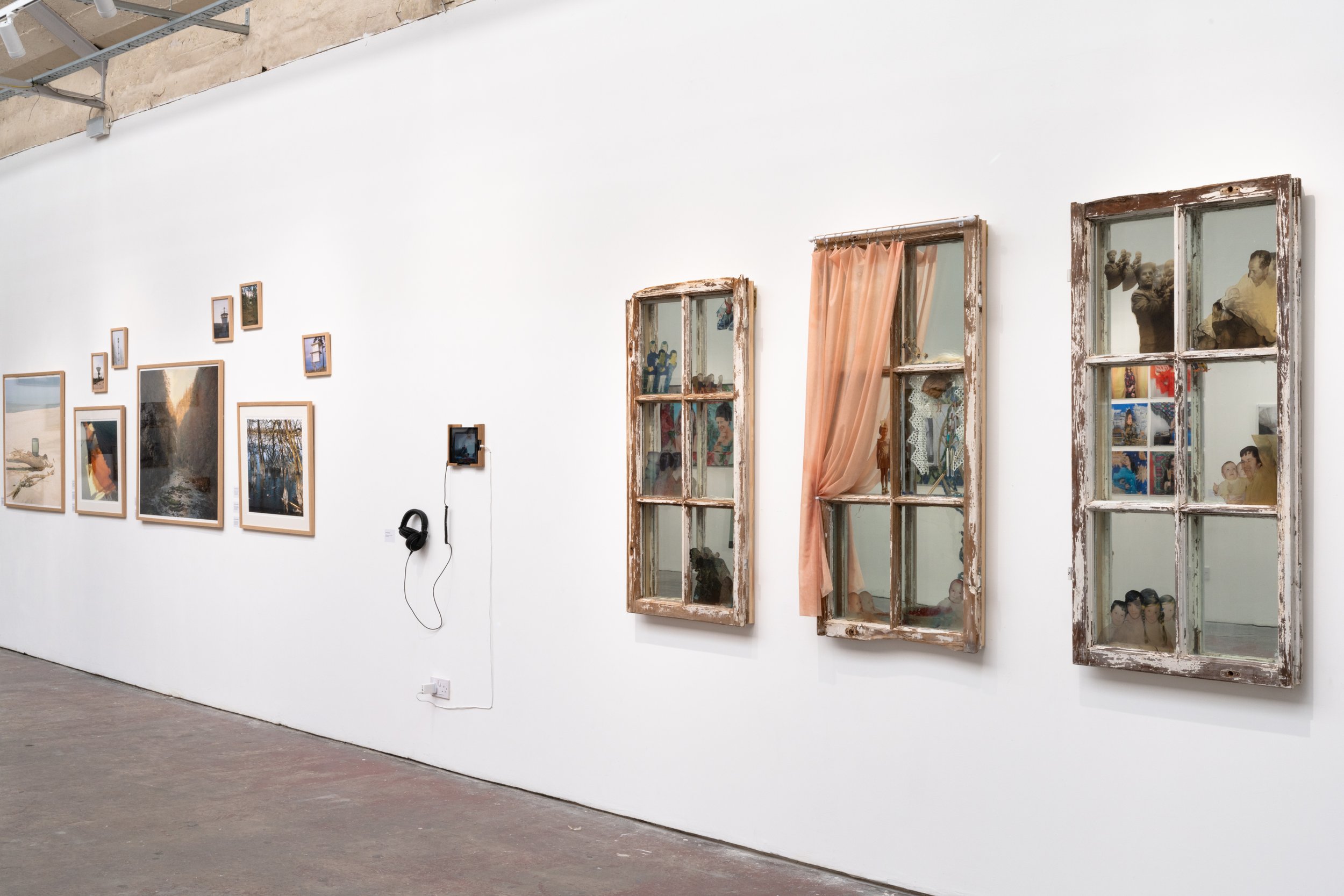
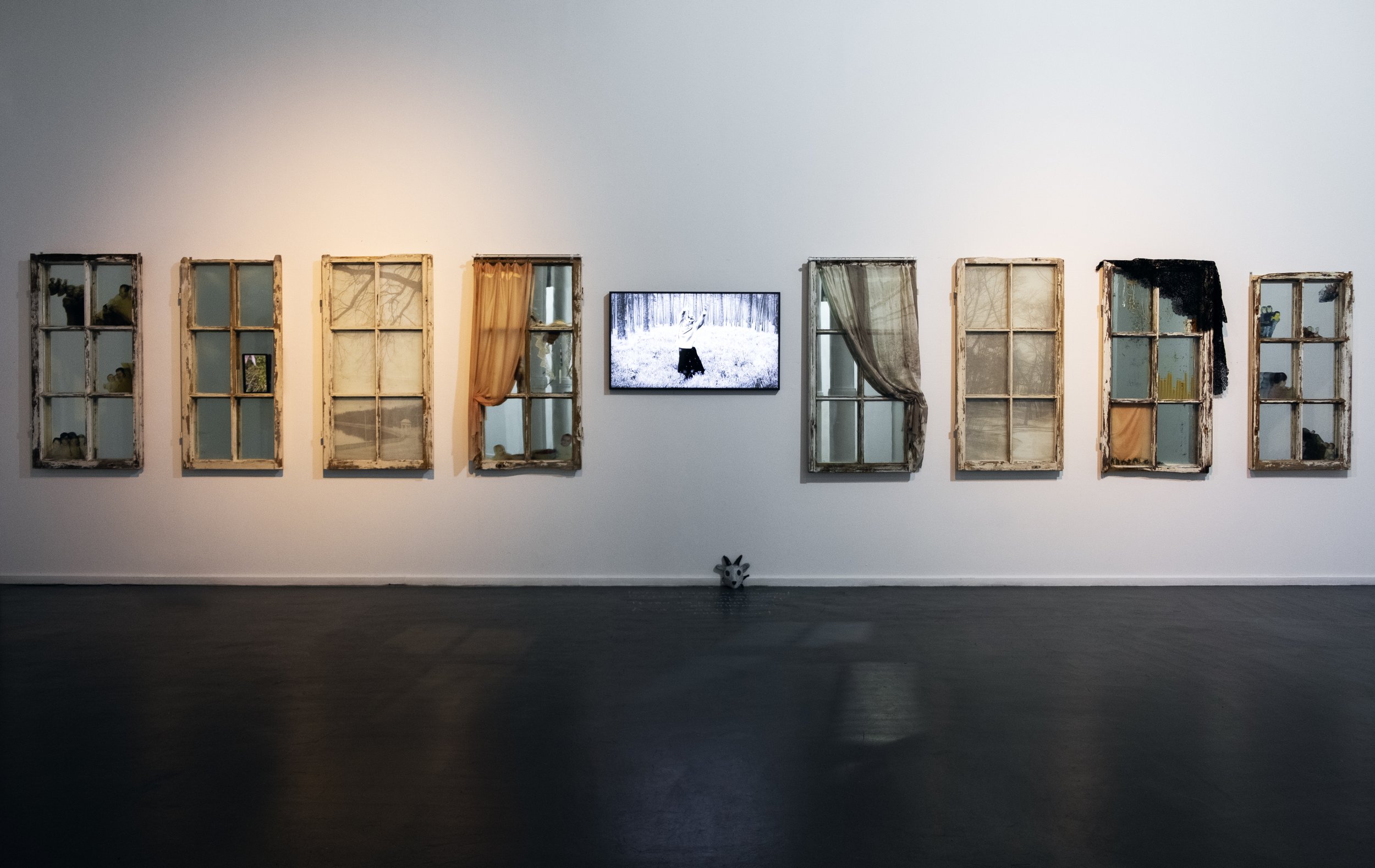
In Price-less (2023), she explores collective memory through funeral rituals in an enclosing space resembling a crypt. A deeply ingrained and culturally resonant practice, Gvardeitseva reconstructs the traditional communal meal that was served after the funerals during the USSR-era. Going way back in time, the funeral meal is a widespread ancient custom rooted in many cultures for honoring their dead. Contemporarily, her performance engages with the participants for considering the private and isolating disposition of grief and placing it in the shared memory of the collective.
Her death mask, Fading away (2023), is a sculpture grounded on confessional overtones. This piece is autobiographical: it reflects Gvardeitseva’s introspective study and healing process during her divorce through a feminist lens. On intimate levels, divorce is both a traumatic turning point and a heavy transformation. In conservative cultures, its stigma tends to fall on the woman. She is often assumed socially responsible for the death of the relationship, failing to preserve the family values or fulfill her duty as a wife. As a response, the mask represents the ritualized severance from the tradition of gendered scapegoating. Gvardeitseva continues to execute sovereignty and self-empowerment over her identity and narrative. By creating her own mask, the object becomes a symbol of renewal where she parts with her old self, shedding it away, and makes room for the new.
For the 3D printing of the silicone mask, Gvardeitseva uses an AI program that collects 99 photographs from different angles and entirely scans her face. This introduction of artificial intelligence into the ritual creates a new layer and can be described as a new-age revival of an archaic tradition. Materially, the silicone mask is submerged in water and adorned with leaves, closely mimicking the feel and look of human skin.
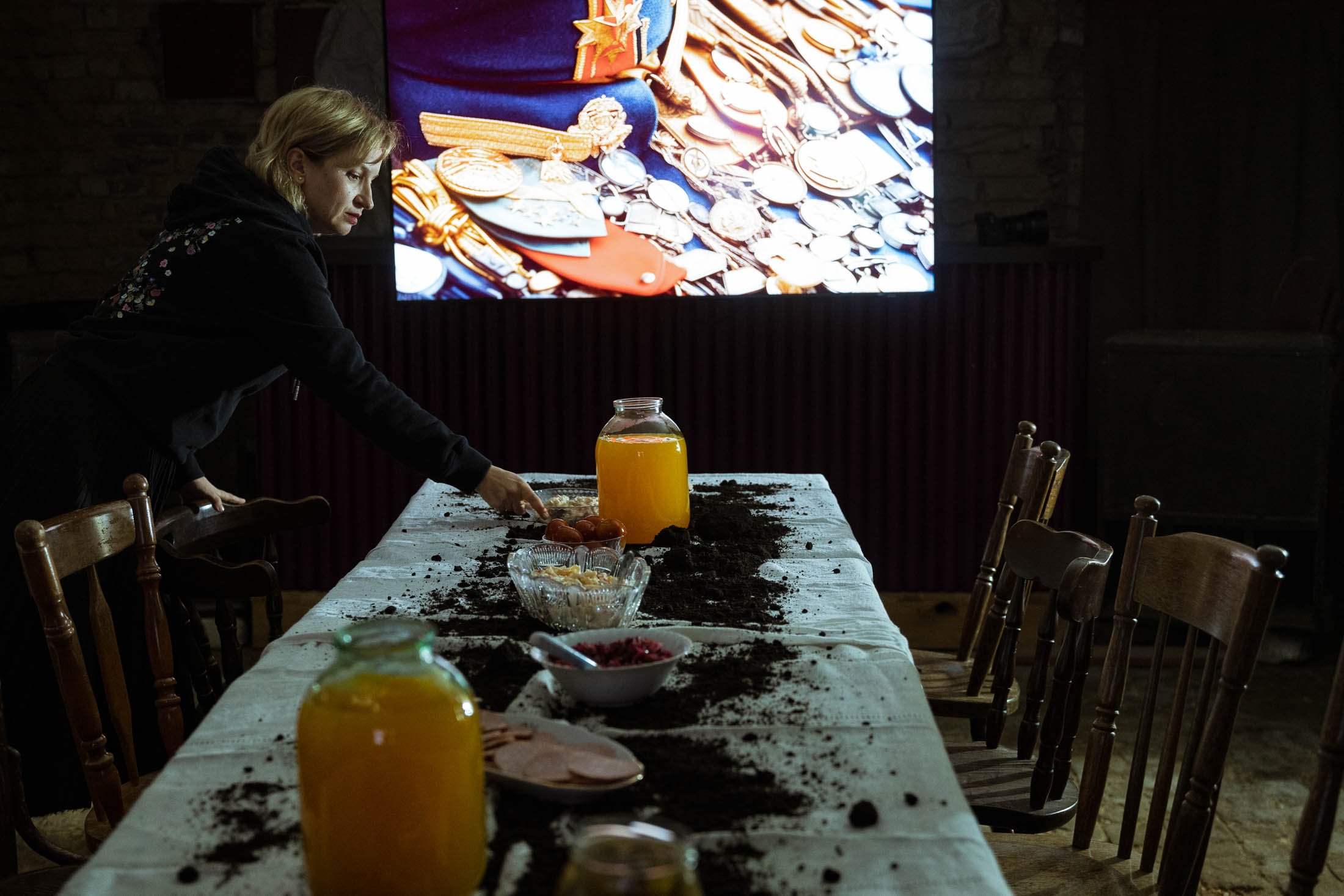
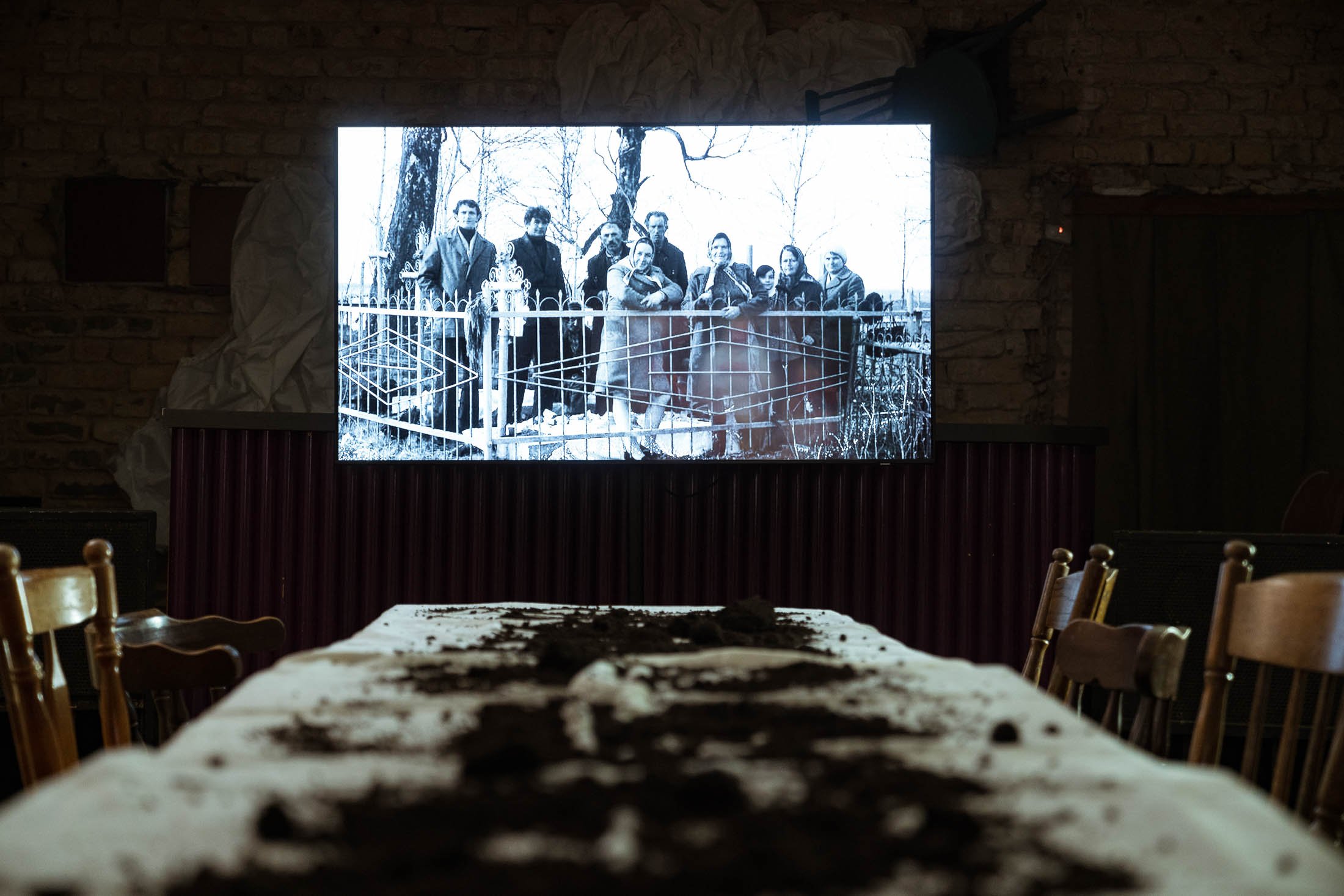
In an age where nonchalance is often idealized and revealing you care is seen as a risk, I love that your works are brazenly personal and deeply emotional. Do you, or have you at one point, struggled with showing your vulnerability?
“We live inside so many matrices that dictate how we should feel, behave, or express ourselves.”
I believe vulnerability is what allows us to remain sensitive to the world, to others, and, in my case, to the creative process itself. I’ve never been afraid of being open. In fact, self-exploration is an essential part of my artistic practice. What I truly hope is that, through my work, people can access their real feelings, not the ones imposed on them by society, governments, or corporations. We live inside so many matrices that dictate how we should feel, behave, or express ourselves. But art, to me, is a moment of encounter with our true self. And that encounter is impossible without vulnerability, without opening yourself up.
Has your decision to leave Belarus and the political defiance against the national agenda ever led to any political or social backlash?
I was a finalist for the Belarusian Pavilion at the Venice Biennale in 2022, but my nomination was later withdrawn — that was probably one of the most significant consequences. Also, I no longer travel to Belarus. There is a real possibility of political persecution, which makes returning unsafe. So yes, the aftermath has been both personal and professional, and it continues to shape how I move through the world as an artist in exile.
What challenges have you encountered in the process of rebuilding your life after migrating?
The truth is, I’ve been in migration for a long time. Although I returned to Belarus from time to time, I’ve spent the last 17 years mostly living outside the country. The real challenge isn’t logistical — it’s existential. You’re always a migrant, always somewhat foreign. I’ve come to accept that I will never truly belong anywhere, and I have no roots, and perhaps that’s just my reality.
There are social circles, but you lose the kind of social mobility that can exist in your homeland, where your accumulated experience and connections can help you navigate systems more easily. That mechanism doesn’t function the same way elsewhere. But I’ve made peace with it. I think society as a whole is becoming more and more nomadic, and while a sense of belonging is important, my path simply unfolded the way it did.
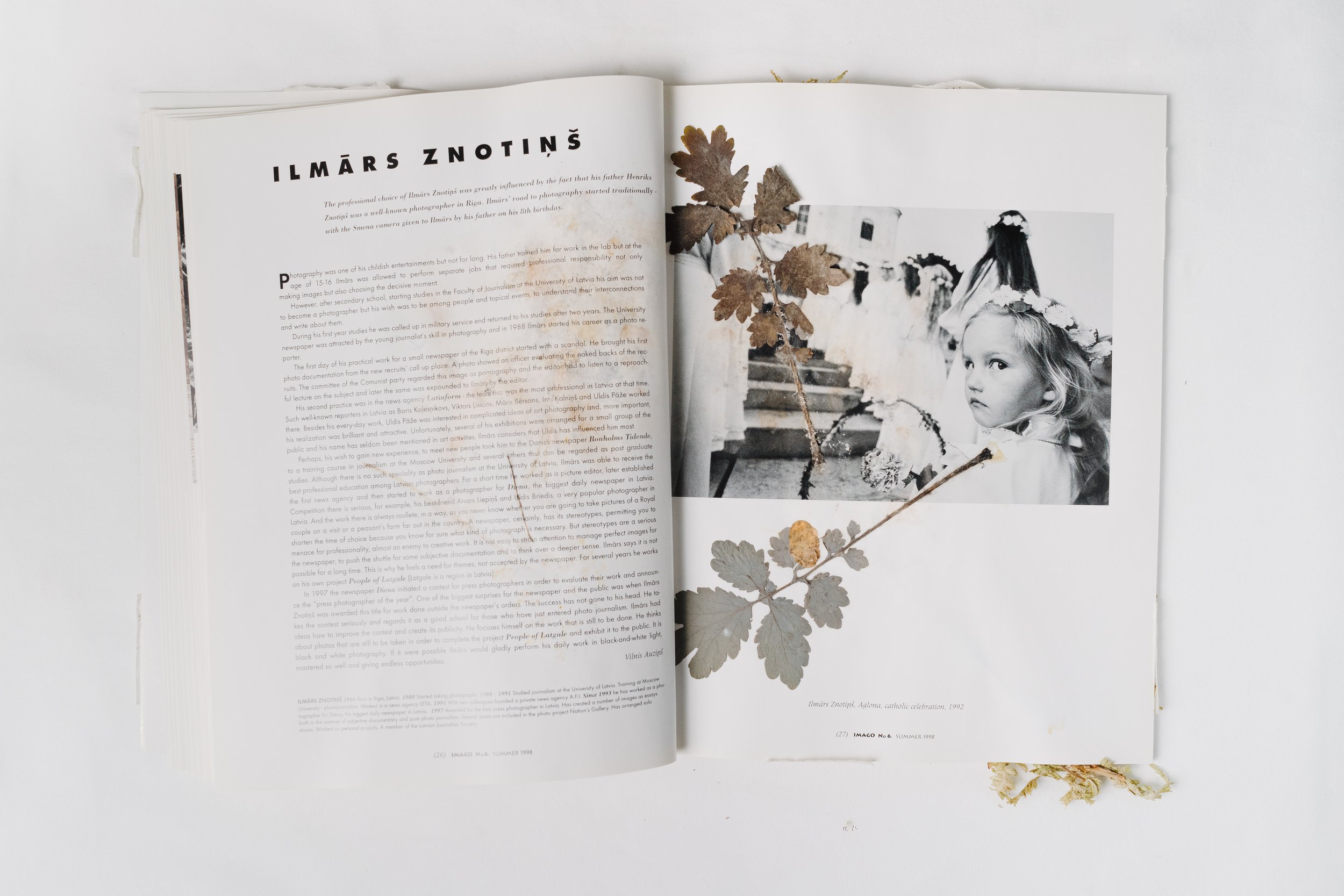

Can you tell us about your upcoming monograph 5-Minute Bedtime Stories that will be published by Skira Arte in 2026?
“I became deeply interested in comparing my experience of separation with that of other women, not from a sociological distance, but from a deeply personal and emotional perspective.”
This monograph is the result of a long research process that began during my divorce in 2022–2023. I became deeply interested in comparing my experience of separation with that of other women, not from a sociological distance, but from a deeply personal and emotional perspective. I conducted twelve in-depth interviews with women from different countries, backgrounds, and worldviews. As I began to analyse them, I noticed one striking commonality: none of the women felt prepared for their divorce. Each described it as a kind of emotional shock — a rupture they hadn’t seen coming.
That realisation led me toward the unconscious, toward the realm of fairy tales. We build our behavioural patterns as children based on the stories we are told. And how do most of those stories end? They lived happily ever after. But what happens after “happily ever after”? That question became the heart of my inquiry.
I rewrote the women’s stories as contemporary fairy tales, transforming trauma into narrative form. The project evolved into an exhibition in London in 2023, and I continued working on it for another year. The book brings together those rewritten stories, fragments of the interviews, my reflections, and the artworks and performances I created around this theme. Some of the women’s quotes were so poignant that I felt they had to be included not just in fiction, but as themselves.
The result is a layered, multivocal work — it can be read as research, as narrative, or even as something playful. But at its core, it’s an attempt to give voice to what happens after the fairy tale ends.
What is the current environment like for Belarusian artists in exile? How would you characterize the sense of community?
The situation remains quite difficult. Most Belarusian artists in exile are currently based in Poland, as this country has offered the broadest support and migration opportunities. One of the key challenges is the inability to renew Belarusian passports, which has left many artists effectively stateless and vulnerable.
There are Belarusian artistic communities across various European countries — larger in some places, smaller in others — but Poland remains the main hub. As for the sense of community, it exists. In my case, it’s mostly based on personal relationships. I’ve participated in several group exhibitions featuring Belarusian artists in exile, and through those shared experiences, we’ve built a quiet but meaningful network. There’s a kind of solidarity that forms when people carry the same rupture, the same longing for a place they can no longer return to.
“There’s a kind of solidarity that forms when people carry the same rupture, the same longing for a place they can no longer return to.”
The Adoration of the Mystic Goat (My Adams), 2024; 5 Minute Bedtime Stories (Fading Away), 2023; The Adoration of the Mystic Goat (My Orthodoxy), 2024; 5 Minute Bedtime Stories (Self Love), 2023.
Your work touches on the topic of cultural rituals. Are there any personal rituals or habits that you practice in your own daily life?
Long breakfasts alone, when possible. Daily walks, preferably among trees. Calls with close friends and loved ones. Meditation for ten minutes a day.
What do you hope in the art world to change in the near future? Where do you believe there is room for growth?
I don’t think in terms of grand changes or institutional revolutions. But I do hope the art world becomes more open to fragility — to what is slow, personal, and not easily categorized. There’s still pressure to be loud, polished, and aligned with trends. I’d like to see more space for work that is intimate, fractured, and rooted in lived experience — especially featuring voices that come from displacement or that were previously marginalized.
There’s also room for rethinking how care, attention, and listening function in artistic contexts — not just as themes, but as methods.
Where can we find you in the second half of 2025? Are there any upcoming projects or plans you are looking forward to?
In the second half of 2025, I’ll be in Milan, London, and New York making presentations related to the launch of my book 5-Minute Bedtime Stories. I’m also preparing a solo exhibition in September in Pisa, titled Ex Contactu. Relics of Pain, Love and Joy. The project explores the idea of relics of the female body — traces that remain after touch, love, or loss. It’s a reflection on how physical and emotional contact can leave sacred, invisible imprints.
Additionally, during the summer, my project Bitter Herbs will be exhibited in two museum institutions in Vilnius. This work focuses on the interaction between human and non-human memory in the context of Holocaust remembrance and examines how natural environments hold and process historical trauma.
Special thanks to Sensity Studio for facilitating this exchange.
Currently, Maria Gvardeitseva lives and works in London, UK.






